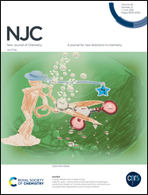High temperature treatment of hemicellulose in pulp-impregnated effluent improves the pre-hydrolysis efficiency
Abstract
Pre-hydrolysis is an important step in the production of xylose using pulp-impregnated effluent (PIE), and the process has the problem of long heating time and high energy consumption. In this study, the pre-hydrolysis effect at two temperatures achieved by different heating methods was compared by determining the concentrations of sugars and hemicellulose, the solid–liquid ratio and transmittance in PIE. It was found that when the same pre-hydrolysis effect was achieved, the time required for pre-hydrolysis at 100 °C was 8 h, but the time was shortened to 2 h at 121 °C. The reaction kinetics results showed that the rate constant of the pre-hydrolysis reaction at 121 °C was higher than that at 100 °C. Computational fluid dynamics results showed that the temperature field distribution in the reactor during the pre-hydrolysis process at 121 °C was more uniform than that at 100 °C, which means that the heat transfer effect was good. The heating calculation showed that the heat absorption efficiency of PIE in the pre-hydrolysis process at 121 °C was 32.99% higher than that at 100 °C. The establishment of the pre-hydrolysis at 121 °C contributes to the industrial application of xylose production using PIE.



 Please wait while we load your content...
Please wait while we load your content...